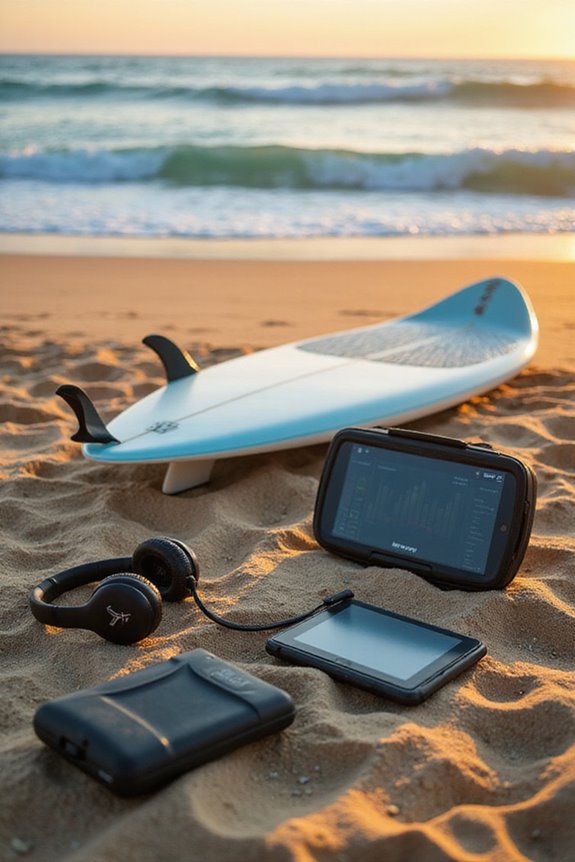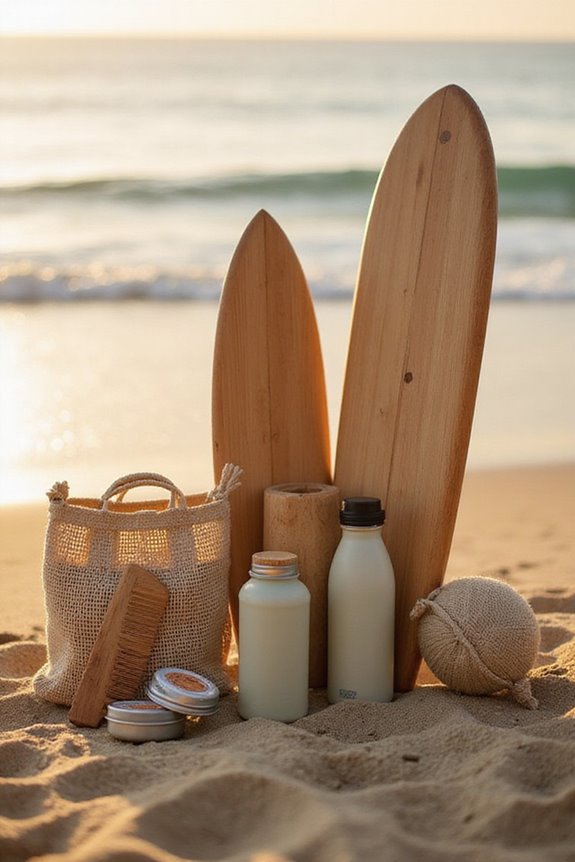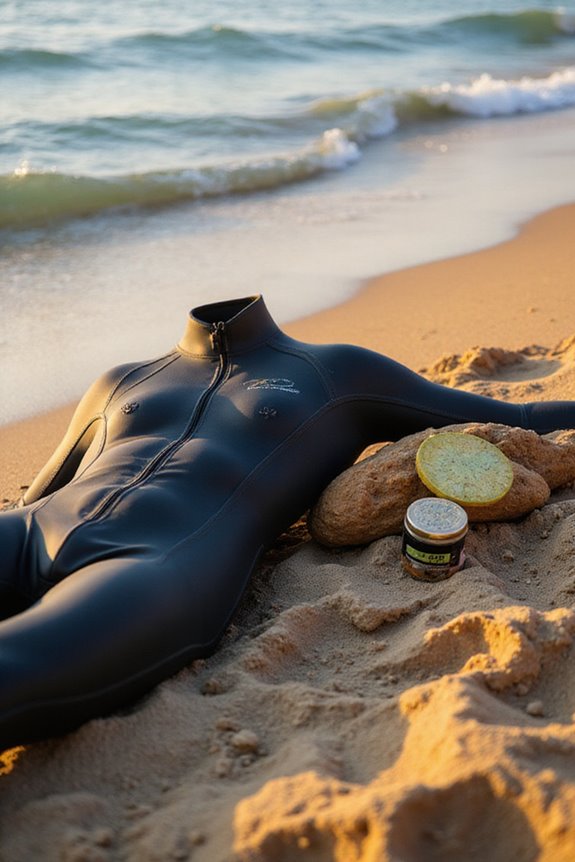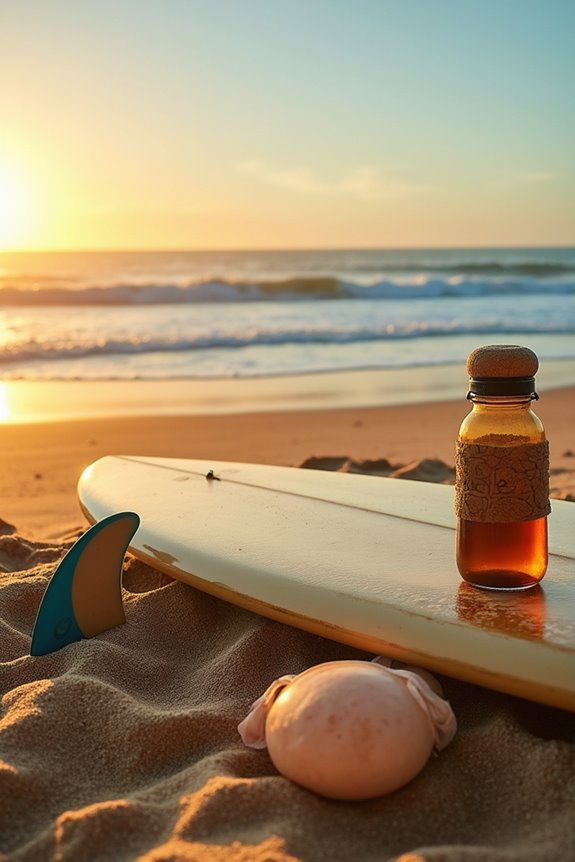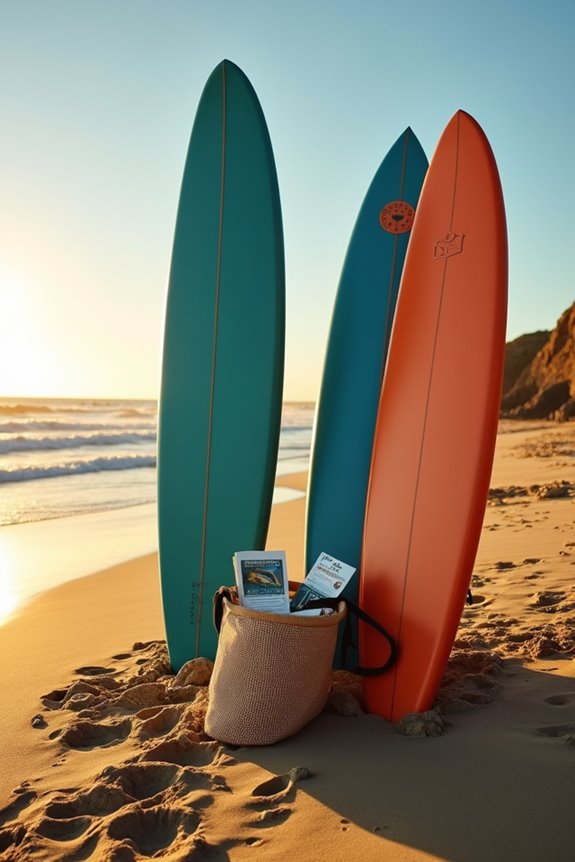The future of surfing looks promising, with projected tourism growth from USD 11.36 billion in 2025 to USD 17.44 billion by 2032. We’ll see exciting advancements in surfing equipment, like smart surfboards with GPS and eco-friendly materials. Community engagement and social media play a big role in attracting diverse participants. Despite environmental challenges and market fluctuations, surfers can expect a vibrant culture enhanced by technology and personalization. Explore the different factors shaping this dynamic industry.
Key Takeaways
- The surfing tourism market is projected to grow significantly, reaching USD 17.44 billion by 2032, driven by increasing global interest.
- Technological innovations, like smart surfboards and advanced wetsuits, will enhance performance and sustainability in the surfing experience.
- Environmental concerns will lead to greater advocacy for Surf Protected Areas and the use of eco-friendly products, ensuring sustainability.
- Community engagement through social media and digital storytelling will strengthen brand loyalty and foster connections among surfers.
- Customization and personalization of surfboards will continue to evolve, catering to individual preferences and enhancing the overall surfing journey.
Market Growth and Economic Impact of Surfing
Additionally, educational surf programs and eco-friendly products are enhancing market development. As surfing becomes more popular, we can expect an expansion in infrastructure, retail, and hospitality, creating jobs and supporting local businesses that thrive on this vibrant culture. This growth may also lead to an increased demand for essential surfing gear, which can further stimulate the market.
Technological Innovations in Surfing Equipment
As the surfing market continues to grow, advancements in technology are reshaping the equipment we use. One notable innovation is the development of smart surfboards, which integrate sensors and GPS devices. These features allow us to collect real-time performance data, improving our technique and enhancing our overall surfing experience.
Additionally, advanced wetsuits are now being made from sustainable materials, offering improved flexibility and thermal insulation. This means we can enjoy longer sessions in colder waters while minimizing our environmental impact. Furthermore, many of these wetsuits now provide UV protection to safeguard against harmful sun exposure during outdoor sessions.
Moreover, the use of modern materials like carbon fiber and high-density foam in surfboards enhances durability and performance. With these technological innovations, we’re not just riding the waves; we’re also embracing a smarter, more sustainable approach to surfing.
Emerging Trends in Surfing Tourism
The surfing tourism industry is riding a wave of growth, driven by a diverse range of factors. The global market is projected to grow from USD 11.36 billion in 2025 to USD 17.44 billion by 2032, indicating a strong interest in adventure travel.
Emerging destinations like El Salvador, Portugal, and the Philippines are attracting surfers, bolstered by government support and events. Significantly, El Salvador saw a 30% rise in international visitors after hosting major competitions.
Furthermore, established spots like Bali and Costa Rica continue to thrive, while inland wave parks offer new surfing experiences. This expansion diversifies options for travelers, appealing to both solo adventurers and luxury seekers looking for unique surfing opportunities. Additionally, surf schools in Costa Rica play a crucial role in fostering new talent and enhancing the overall surfing experience.
Demographic Dynamics Shaping Surfing Participation
Understanding the demographic dynamics shaping surfing participation reveals important trends about who engages in the sport. A significant 71% of surfers are aged between 6 and 34 years, showcasing strong youth engagement. Importantly, over 70% start surfing before age 16, indicating early involvement.
In terms of gender diversity, males make up about 65% of participants, while females represent 35%. Although women account for 25% of registered professional surfers, the gender gap remains substantial. However, female participation is steadily increasing, driving growth and diversification within the sport. This growth is supported by stylish designs and functional surf gear tailored for women, making the sport more accessible and appealing.
Environmental and Safety Considerations in Surfing
Environmental and safety considerations are increasingly significant as we consider the future of surfing. To guarantee environmental sustainability, we must protect carbon-rich ecosystems like mangroves and seagrasses, which play a crucial role in carbon sequestration. These areas not only preserve biodiversity but also enhance wave quality.
Moreover, surfers face health risks from water pollution, including pathogens from sewage and chemicals. Implementing effective safety protocols is essential to mitigate these hazards. The use of reef-safe options in sunscreens can also contribute to protecting marine ecosystems from harmful chemicals.
To address coastal erosion and habitat degradation, we should support conservation strategies that maintain natural shorelines. By advocating for Surf Protected Areas, we can safeguard both our surfing environments and personal safety while enjoying the waves. Together, we can promote a healthier ocean and safer surfing experiences.
Future Opportunities in Surfing
As we explore the future opportunities in surfing, it’s clear that the industry is poised for significant growth and innovation. The surfing tourism market is expected to soar, reaching USD 95.93 billion by 2030, driven by emerging surf destinations and eco-tourism initiatives. This growth opens up numerous surfing careers, from surf instructors to travel planners, benefiting our surf community.
Moreover, advancements in surfboard technology, such as smart and sustainable designs, will attract more participants, especially among youth. Digital platforms will enhance engagement, offering virtual experiences and training opportunities. By integrating surfing with health and wellness trends, we can foster a lifestyle that values both fitness and environmental sustainability, ensuring a vibrant future for surfing enthusiasts everywhere. Additionally, the introduction of eco-friendly surfboards will promote environmentally conscious practices among surfers, further solidifying the sport’s commitment to sustainability.
Challenges Facing the Surfing Industry
While we celebrate the growth of surfing, we must also recognize the challenges that threaten its sustainability. Environmental factors, like coastal erosion and rising sea levels, reduce suitable surf spots. Marine pollution affects water quality, impacting our surfing conditions. Additionally, strict regulations in protected areas limit infrastructure development for surf competitions.
Market fluctuations create unpredictability in demand for surfing equipment and tourism services. This can lead to unsold inventory and financial strain. Safety risks associated with high-wave competitions increase insurance costs and may deter event organizers. Finally, limited access to consistent surf locations and insufficient infrastructure in emerging markets hinder industry growth. Addressing these issues is essential for the future of surfing and coastal conservation efforts.
The Role of Women in the Future of Surfing
The surfing industry faces numerous challenges, but the increasing role of women in the sport presents a promising avenue for growth and sustainability. As female surfers now represent 35% of the global surf population, more women-led organizations are emerging, fostering community building and female empowerment.
These women-only surf clubs, like ‘The Glide Gals,’ create safe spaces for beginners and intermediates, helping to overcome intimidation in male-dominated lineups. Additionally, female-focused surf retreats and camps are expanding, encouraging women to explore surf tourism.
With increased visibility and representation in competitions, we’re seeing more role models for younger generations, breaking down stereotypes and making surfing more accessible. This shift not only promotes inclusivity but also drives economic growth in the surf industry.
The Influence of Social Media and Celebrity Culture
Social media has fundamentally reshaped the surfing landscape, influencing how we connect with the sport and each other. Platforms like Instagram and TikTok enable influencer marketing, where surfers share their skills and lifestyles, driving social media engagement and brand authenticity.
Celebrity endorsements from figures like Jamie O’Brien and Bethany Hamilton broaden our appeal, attracting diverse participants. They help us see surfing as relatable and aspirational.
Community building thrives through user-generated content and digital storytelling, forming strong consumer tribes. These online spaces foster a sense of belonging, enhancing brand loyalty.
As we navigate this digital transformation, analyzing social media’s influence is essential for brands to refine strategies and meet our evolving needs within the surfing culture.
Customization and Personalization in Surfboards
Customization and personalization in surfboards have become central to enhancing our surfing experience. With advances in materials like epoxy resin and carbon fiber, we can now enjoy lighter, more durable boards. Modern custom board design allows us to tailor aspects such as length, width, and rocker profile through online configurators and 3D modeling tools.
Additionally, personalized surfboards can reflect our unique style with custom graphics and color choices. Data-driven design offers insights based on our riding preferences and skill levels, ensuring peak performance. While challenges like cost and accessibility exist, the growing trend towards bespoke boards fosters brand loyalty and innovation. As we explore these options, we embrace a more tailored approach to our surfing journey.
Frequently Asked Questions
How Will Climate Change Affect Surf Conditions in the Future?
We’re witnessing climate change shifting ocean currents and altering wave patterns. As conditions become less predictable, we might face fewer consistent surf opportunities, while some regions could surprisingly thrive with new, exciting breaks emerging.
What Regions Are Emerging as New Surfing Destinations?
Imagine catching waves in Indonesia hotspots like the Mentawai Islands, while Africa’s growth in surf tourism reveals gems like Morocco. Together, we can explore these emerging destinations, each offering unique experiences and breathtaking scenery.
How Does Surfing Impact Local Economies and Communities?
Surfing greatly impacts local economies through surf tourism and community engagement. We see towns thriving as surfers visit, fostering economic growth and encouraging sustainable practices that benefit both the environment and local communities.
What Initiatives Promote Inclusivity in the Surfing Community?
Did you know that by 2024, 40% of U.S. surfers are people of color? Through adaptive programs and diverse representation initiatives, we’re fostering inclusivity, ensuring everyone feels welcome and empowered in the surfing community.
How Can Surfers Reduce Their Environmental Footprint While Enjoying the Sport?
To reduce our environmental footprint while surfing, we can choose eco-friendly boards, minimize plastic use, and engage in sustainable practices like beach clean-ups. Together, let’s protect our oceans and enjoy the waves responsibly.

